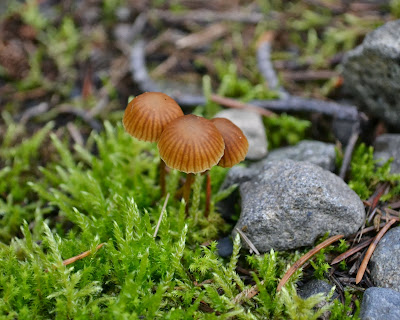Since keeping separate blogs for my crafting and photography etc., meant that I didn't dedicate any good time to either, especially as some of my stuff tends to overlap, I decided to join everything into one blog. So I welcome you to visit me now at http://thepurplethneed.blogspot.ca/.
Hope to see you soon!
Corrie
To Imagine is Everything.
Wednesday, February 18, 2015
Wednesday, March 19, 2014
Homemade Rye Bread Recipe
So, as promised, finally I'm posting my Rye Bread Recipe.
This is my own recipe which I adapted from various sources, since I couldn't quite find the one I was looking for.
Start by dissolving 1 TBSP active dry yeast in 3/4 cup warm water, until you see the mixture start to get frothy.
Next, add 1 cup warm milk, 1/4 softened butter, 1 egg yoke (save the egg white as you'll need it later), and 1TBSP molasses.
Turn onto oiled counter, form into 2 round loaves and place on baking sheet until once again doubled in size. Then add 1 TBSP water to the egg white and beat lightly until mixed. With a pastry brush, coat the top of both loaves. Sprinkle with course sea salt, poppy seeds and caraway seeds. Then make 3 knife slashes across the top.
This is my own recipe which I adapted from various sources, since I couldn't quite find the one I was looking for.
Start by dissolving 1 TBSP active dry yeast in 3/4 cup warm water, until you see the mixture start to get frothy.
Next, add 1 cup warm milk, 1/4 softened butter, 1 egg yoke (save the egg white as you'll need it later), and 1TBSP molasses.
Then add 1/4 cup sugar, 1.5 tsp salt and 2 cups rye flour. Beat this mixture until completely smooth.
Slowly add around 2.5 cups of all purpose flour. By the end I have my dough hook attached. The dough will be somewhat sticky, but that is the nature of rye flour. If it looks like it is forming into a good dough, continue kneading for a few minutes.
Since rye can be sticky, use oil instead of flour on the counter when doing the final kneading. I put a small amount on my counter and on my hands. The first time I made rye bread I used flour, but because of the stickiness it doesn't work well at all.
Form into a ball and place in oiled bowl, cover and let rise until doubled.
This is what it will look like after about an hour or so.
Turn onto oiled counter, form into 2 round loaves and place on baking sheet until once again doubled in size. Then add 1 TBSP water to the egg white and beat lightly until mixed. With a pastry brush, coat the top of both loaves. Sprinkle with course sea salt, poppy seeds and caraway seeds. Then make 3 knife slashes across the top.
Bake loaves at 375 F for 20 - 25 minutes. Don't under bake this loaf as it is rather moist and tastes better with a nice crust.
I hope you enjoy this loaf as much as my family does. Let me know in the comments if you do try it, and let me know how it works for you.
Happy Baking!
Tuesday, October 1, 2013
Mushrooms around Lightening Lake in Manning Park.
When my sister-in-law Thea showed me the amazing mushrooms pictures she had taken in Manning Park I knew I had to make a trip out there myself. Last Thursday my kids had only a half day of school, so we drove up to Manning Park to see if there were any mushrooms left. And wow! Were there ever a lot of fungi around. I went camera happy, and below are some of the different types we found. Because I'm still learning to ID many of these, I have left off any names for now.
Because mushrooms grow from spores, not seed, they often seem to magically appear out of nowhere over night.
When I first spotted this mushroom, I thought it was a small, mushy orange that someone had dropped along the trail.
Pushing it's way through the rich ground cover of the forest floor.
Hieroglyphics found in the tombs of the Pharaohs suggest that the ancient Egyptians believed the mushroom to be “the plant of immortality.” The mushroom’s distinct flavor so intoxicated these demi-gods, that they decreed mushrooms to be food for royalty alone, and prohibited any commoner from handling the delicacies.
All mushrooms are Fungi, but not all Fungi are Mushrooms.
Mushrooms are fungi. Fungi are as uniquely different from plants as plants are from animals. In fact, fungi and animals are now in the same super-kingdom
A giant fungus (F. ellipsoidea) discovered in Hainan Province, China, in 2010 may be largest ever documented, with a fruiting body of 10 meters (about 33 feet) and weighing about half a ton, according to the BBC News.
Fungi are very difficult to observe. What we call a mushroom is only the tip of the iceberg of a much bigger and essential invisible organism that lives most of its live underground.
A single fungus recently found in Michigan covers an area of forty acres underground and is thought to be a few centuries old.
Some of the oldest living mushroom colonies are fairy rings growing around the famous Stonehenge ruins in England. The rings are so large that they can best be seen from airplanes.
Subscribe to:
Comments (Atom)





























































































